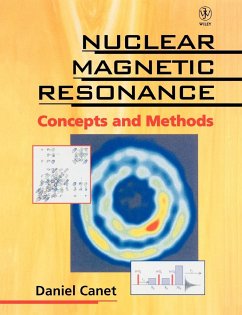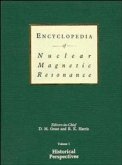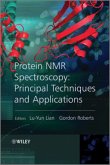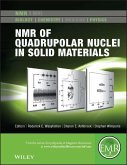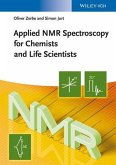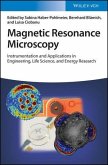Emphasizes the physical and mathematical features of liquid state NMR spectroscopy which underpin the numerous important applications of the technique. Details of some of these applications, such as structural determination from small organic molecules to large biomolecules, the study of molecular motions and NMR imaging then follow. Detailed examples and figures throughout the text enable the student to grasp conceptually challenging ideas, while the most advanced mathematical and quantum concepts are presented so that they can be skipped on a first reading without impeding a global understanding of the key concepts.
Nuclear Magnetic Resonance (NMR) spectroscopy is one of the most powerful analytical techniques available in modern science, and is widely used by chemists, biochemists, physicists and physicians. Nuclear Magnetic Resonance: Concepts and Methods examines the physical and mathematical features of liquid state NMR spectroscopy which underpin the numerous important applications of the technique, before exploring these applications in depth. Detailed examples and figures presented throughout the text enable the student to understand conceptually challenging ideas. Advanced mathematical and quantum mechanical developments are presented in such a way that they can be skipped on a first reading, enabling the reader to concentrate on the key concepts underlying such important topics as Fourier Transform NMR spectroscopy, product-operator formalism, signal processing techniques and spin relaxation theory. In the concluding chapter, a survey of the major multipulse and multidimensional NMR techniques is given, including selective excitation, correlation spectroscopies and NMR imaging.
Nuclear Magnetic Resonance:
Concepts and Methods will be invaluable to graduate and undergraduate students, giving a clear understanding of the physical and mathematical background which underlies the many applications of this powerful and sophisticated technique. It will also be of great interest to more experienced researchers in the many fields where NMR spectroscopy is now routinely used.
Hinweis: Dieser Artikel kann nur an eine deutsche Lieferadresse ausgeliefert werden.
Nuclear Magnetic Resonance (NMR) spectroscopy is one of the most powerful analytical techniques available in modern science, and is widely used by chemists, biochemists, physicists and physicians. Nuclear Magnetic Resonance: Concepts and Methods examines the physical and mathematical features of liquid state NMR spectroscopy which underpin the numerous important applications of the technique, before exploring these applications in depth. Detailed examples and figures presented throughout the text enable the student to understand conceptually challenging ideas. Advanced mathematical and quantum mechanical developments are presented in such a way that they can be skipped on a first reading, enabling the reader to concentrate on the key concepts underlying such important topics as Fourier Transform NMR spectroscopy, product-operator formalism, signal processing techniques and spin relaxation theory. In the concluding chapter, a survey of the major multipulse and multidimensional NMR techniques is given, including selective excitation, correlation spectroscopies and NMR imaging.
Nuclear Magnetic Resonance:
Concepts and Methods will be invaluable to graduate and undergraduate students, giving a clear understanding of the physical and mathematical background which underlies the many applications of this powerful and sophisticated technique. It will also be of great interest to more experienced researchers in the many fields where NMR spectroscopy is now routinely used.
Hinweis: Dieser Artikel kann nur an eine deutsche Lieferadresse ausgeliefert werden.

